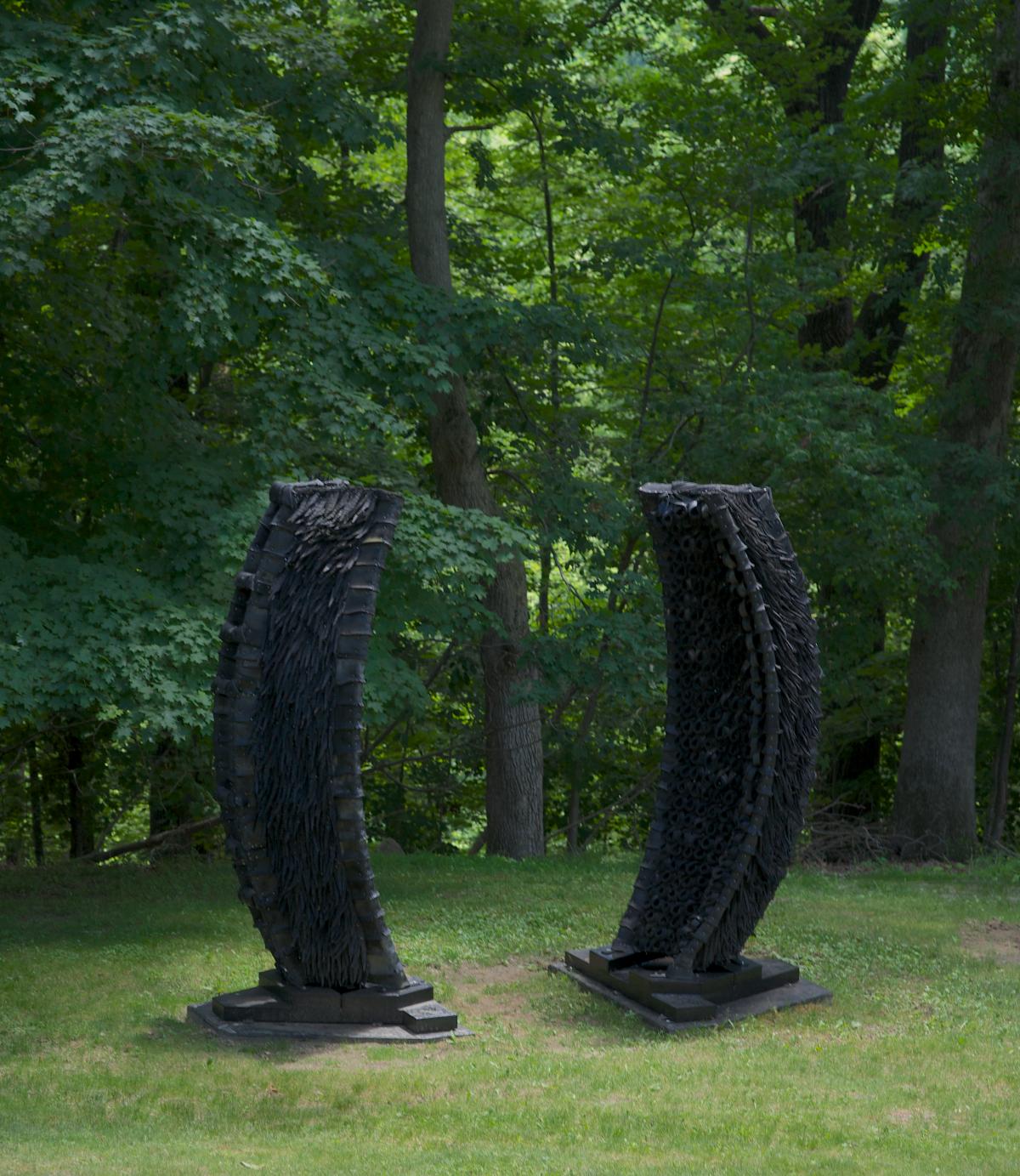On view
American, b. 1953
A Moment in Time, 2004
Rubber tires, stainless steel, and steel
10 ft. x 9 ft. 1 in. x 10 ft. 2 in. (304.8 x 276.9 x 309.9 cm)
Gift of the Horace W. Goldsmith Foundation
Photo by Jerry L. Thompson
Chakaia Booker works almost exclusively with recycled tires, slicing, twisting, stripping, weaving, and riveting rubber and radials to exaggerate and create the textures, prickled edges, and torqued forms of her radically refashioned sculptures. Whether creating small-scale wall reliefs resembling ballistic blowouts, suggestively hairy and ovoid pedestal sculptures, or colossal landscape-like tableaux, Booker transforms tires—iconic symbols of urban waste and blight—into extraordinary compositions of renewal.
A Moment in Time suggests multiple meanings that crisscross historical, social, political, and cultural contexts. Booker has stated, “Cultural diversity in this society is like the tire elements: tires that have been under an explosive moment may retain wonderful visual patterns that come about between the layering of metal treads and the rubber-gluing agents. Sometimes it’s rust stains; other times, it’s the textures, the treads that remain.” The varying tonalities of the rubber used, from brown- and blue- to green- and red-black, elicit different racial identities while simultaneously evoking the longstanding history of monochromatic black sculpture in modern art. The sculpture’s portal-like, bifurcated form encourages viewers’ passage through, and subsequent winding around, the piece’s contours.
As commercial objects, tires symbolize the rise and fall of industrial revolutions; the movement of populations across the landscape; the growth of the suburbs; and the decay of urban centers. Discarded and repurposed, Booker’s tires also serve as metaphors for the cycle of industrial manufacture and waste in our contemporary era of global expansion. A Moment in Time alludes not only to environmental degradation and decay but also to the possibility of transformation and redemption through the artist’s own brand of environmental sensitivity.
A Moment in Time suggests multiple meanings that crisscross historical, social, political, and cultural contexts. Booker has stated, “Cultural diversity in this society is like the tire elements: tires that have been under an explosive moment may retain wonderful visual patterns that come about between the layering of metal treads and the rubber-gluing agents. Sometimes it’s rust stains; other times, it’s the textures, the treads that remain.” The varying tonalities of the rubber used, from brown- and blue- to green- and red-black, elicit different racial identities while simultaneously evoking the longstanding history of monochromatic black sculpture in modern art. The sculpture’s portal-like, bifurcated form encourages viewers’ passage through, and subsequent winding around, the piece’s contours.
As commercial objects, tires symbolize the rise and fall of industrial revolutions; the movement of populations across the landscape; the growth of the suburbs; and the decay of urban centers. Discarded and repurposed, Booker’s tires also serve as metaphors for the cycle of industrial manufacture and waste in our contemporary era of global expansion. A Moment in Time alludes not only to environmental degradation and decay but also to the possibility of transformation and redemption through the artist’s own brand of environmental sensitivity.

